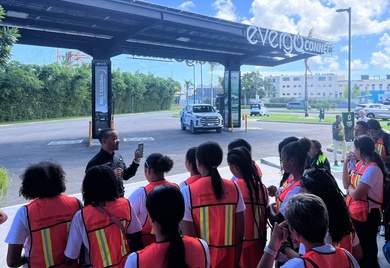Tailored Solutions and Services can Unlock Homeownership for Women

Housing is enshrined in the Universal Declaration of Human Rights.
Despite this, according to estimates by UN Habitat, up to 1.6 billion people globally, equivalent to around 440 million households, could currently be living in inadequate housing units.
Furthermore, by the end of this decade, the number of affected people that will need access to adequate housing is expected to reach 3 billion.
Across the Caribbean, the housing sector is affected by several challenges not limited to macroeconomic instability.
A shortage of land for private enterprise-led (housing) development, unaffordable prices (in most cases), and the dependence on the state-appointed agencies (where they exist) for the housing industry’s growth are also part of the picture.
Limited Access
These challenges only worsen when one considers that the lack of affordable housing, owing to insufficient regulatory frameworks, limited capital markets development, and other factors, places the path to homeownership beyond the reach of many.
You May Also Like
Female-headed households, or those in which a woman is the primary income earner or decision-maker, are disproportionately more disadvantaged in accessing finance for housing than men.
Moreover, women have limited access to credit markets and when they do get access, they receive inferior terms and conditions compared to their male counterparts. As a result, women comprise the majority of those affected by poverty.
Risks and Opportunities
Women head at least one-third of households in Trinidad and Tobago, according to statistics.
In addition to earning less, female-headed households face other financial commitments for childcare and education, in addition to the excessive cost and legal fees for purchasing a home.
They are often required to have little to no debt to qualify. The inability to access homeownership by women increases the risk of homelessness for them and their families as well as their vulnerability to various forms of violence.
IDB Invest News
Facilitating women’s access to housing finance could improve their economic and social wellbeing. Higher-quality housing can connect women to new employment opportunities and increase their safety and security.
However, to meet this opportunity, regional financial institutions need support to develop their value propositions regarding housing finance for women.
Currently, most financial institutions internal policies and practices do not take into consideration these imbalances, and these processes may disadvantage women seeking credit access.
Tailored Solutions
However, if these institutions can create tailored solutions and services that consider women’s needs, they can tap into this large market, adding value to their bottom line.
IDB Invest, a multilateral development bank focused on the region, has been working to improve female-headed households’ access to finance.
Its earlier work and that of similar agencies to increase access to finance to women small—and medium-sized enterprises (WSMEs) provide complementary results already in the marketplace.
Financial institutions that have tailored value propositions to WSMEs, for example, report business growth coupled with a low rate of non-performing loans.
Addressing these challenges will not only protect families, but also generate opportunities, and ultimately foster a more equitable and prosperous society regionally.
LIKE WHAT YOU JUST READ?
Subscribe to our mailing list to stay informed on the latest IDB Invest news, blog posts, upcoming events, and to learn more about specific areas of interest.
Subscribe



